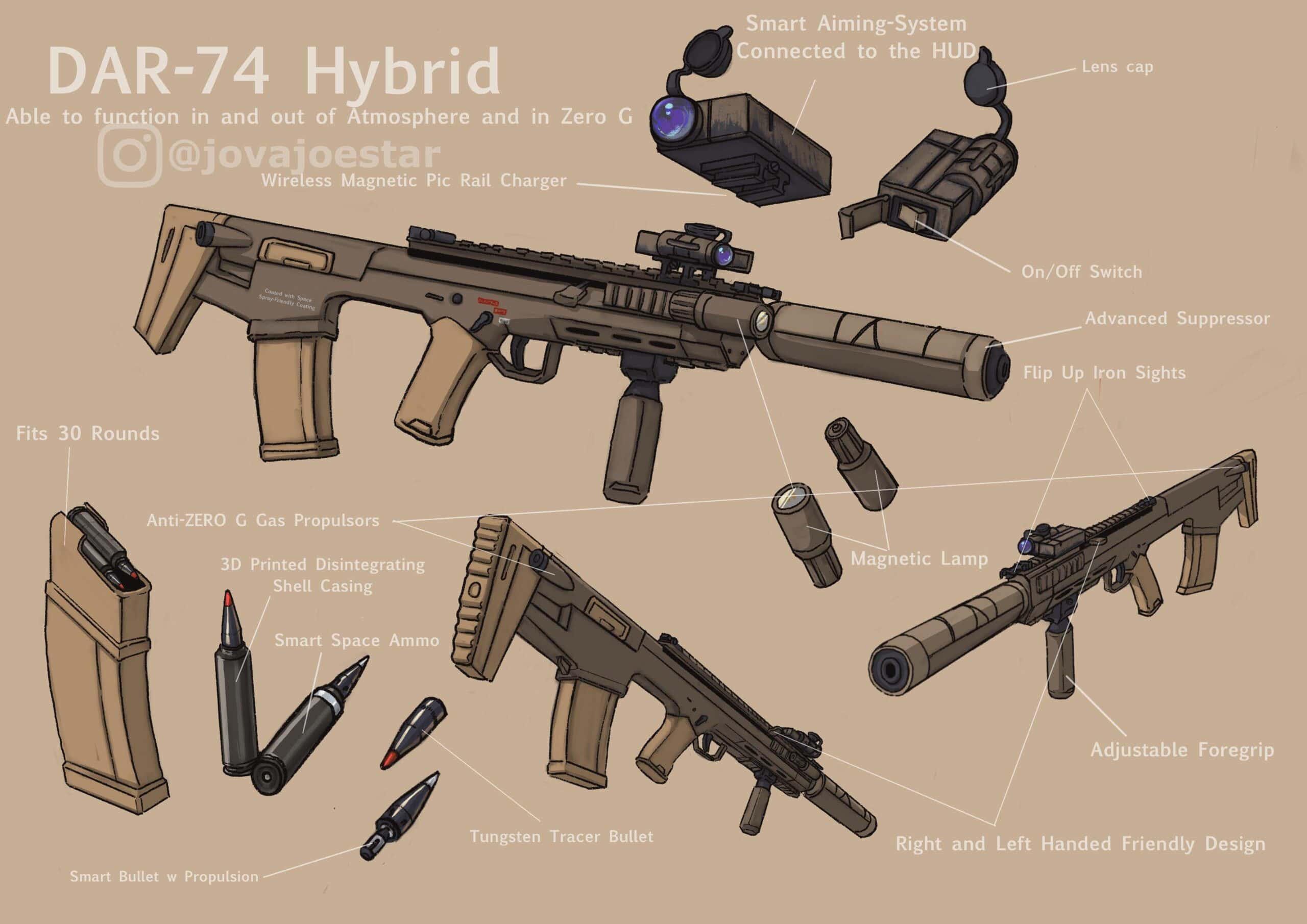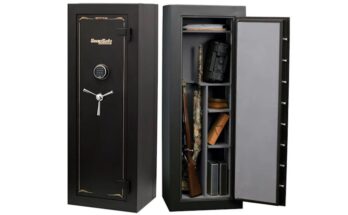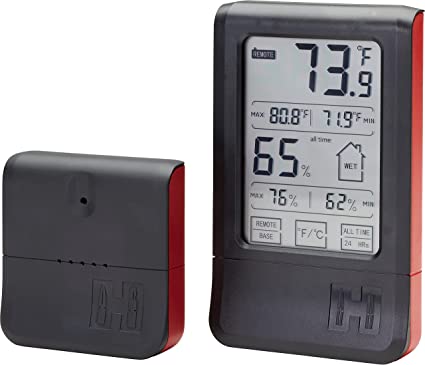Yes, guns can overheat from prolonged or rapid firing. This risk increases with the rate and volume of fire.
Guns, like any machine with moving parts, generate heat through friction and the explosion of gunpowder within their chambers. Sustained use without proper cooling or rest periods can cause a firearm to become excessively hot, leading to potential malfunction, wear, or even danger to the operator.
In firearms, heat is a critical factor that requires consideration both in design and during operation. Manufacturers often design guns to withstand certain levels of heat, but responsible handling and knowledge of a weapon’s limitations are crucial for the safe and effective use of firearms. Regular maintenance and adherence to recommended firing protocols can mitigate the risks associated with gun overheating, ensuring both the longevity of the weapon and the safety of its user.
The Physics Of Gun Heat
Understanding how guns heat up during use is vital for safety and performance. The process involves several physical phenomena, with metal expansion and friction playing key roles. Learning about these factors helps explain why guns overheat and how to prevent it.
Metal Expansion And Contraction
As a gun is fired, each bullet passing through the barrel generates heat. This heat causes the metal components of the gun to expand. The metals used in gun construction have different thermal expansion coefficients. These coefficients measure how much a metal expands when heated.
The inner workings of the gun must tolerate this expansion. Otherwise, they could jam or misfire. Contraction occurs as the gun cools down. Rapid or repeated heating and cooling can lead to metal fatigue. The table below highlights common gun metals and their expansion coefficients:
| Metal | Expansion Coefficient |
|---|---|
| Steel | 11-13 x 10-6 /°C |
| Aluminum | 23-24 x 10-6 /°C |
| Titanium | 8.6 x 10-6 /°C |
Friction In The Barrel
Friction is another significant contributor to gun heat. Each bullet generates friction against the barrel’s interior as it’s propelled out. This friction turns kinetic energy into thermal energy, increasing the temperature.
Barrels have rifling, grooves cut into the bore that impart a spin to the bullet. This helps with accuracy but also increases friction. To mitigate friction-induced heating, gun owners use lubricants. Lubricating the barrel:
- Reduces the friction
- Minimizes wear and tear
- Helps maintain accuracy
Regular maintenance, proper handling, and understanding the physics of gun heat contribute to a safe and effective shooting experience.
Cases Of Firearms Overheating
When imagining a firearm, the thought of it overheating might not be the first thing that comes to mind. Guns, like any machine, can indeed overheat; this is especially true if they’re used intensively. Let’s dive into actual instances where firearms have overheated, from warzones to local shooting ranges.
Warzone Reports
In extreme combat situations, weapons are pushed to their limits. Soldiers often report their guns heating up after prolonged firefights. Sustained firing can lead to a rise in barrel temperatures, which can cause several issues:
- Performance drops, accuracy suffers
- Ammo may cook-off, firing without the trigger being pulled
- Parts can warp or even fail
Examples include machine guns that have been fired continuously without pause, or rifles that have gone through several high-capacity magazines in quick succession.
Shooting Range Incidents
Gun enthusiasts and professionals alike frequent shooting ranges for practice. Overheating can occur here as well. Rapid firing without adequate cooling periods can lead to:
- Increased barrel temperatures
- Reduced weapon lifespan
- Potential safety hazards
Metal fatigue or damage is a risk for heavily used firearms. Instructors often remind shooters to allow their guns to cool down between sessions to prevent such incidents.
Design Limitations And Heat Dissipation
Like any machine with moving parts, guns generate heat. This heat comes from the friction within the gun and the explosion that drives the bullet out. All guns have a limit to how much heat they can handle. Too much heat can lead to misfires, damage to the gun, or even danger to the user. Let’s explore the materials that make up guns and how they manage this heat.
Materials Used In Guns
Different parts of a gun need materials that can handle stress and heat. The barrel, for instance, is usually made of metal like steel or alloys. These can withstand high temperatures for a short time. The choice of materials for gun manufacturing focuses on durability and heat resistance. Here is a simple breakdown:
| Part of Gun | Common Materials | Heat Resistant Features |
|---|---|---|
| Barrel | Steel, Stainless Steel, Alloys | High melting point, Conductivity |
| Frame | Aluminum, Polymer | Lightweight, Durable |
| Internal Parts | Titanium, Steel | Strength, Resilience |
Cooling Mechanisms
Guns have built-in ways to deal with heat. Some have vents that let air flow over the hot parts. Others use special materials that spread out the heat. Heavy-duty guns may even have water cooling. Small guns rely mostly on breaks between shots. Here’s how different guns keep cool:
- Semi-Automatic Pistols: Air cooling between shots
- Rifles: Larger surface area, Air cooling, Some with heat sinks
- Machine Guns: Quick-change barrels, Water cooling systems (in some cases)
Managing heat is critical in gun design. The right materials and cooling mechanisms ensure the gun operates safely and lasts longer. Always remember that guns should be handled with care, especially if they have been fired recently and may be hot.

Credit: www.reddit.com
Consequences Of Excessive Firing
Guns, like any machine, can suffer from overuse. Firing a gun repeatedly can lead to some serious issues. We will explore what happens when a weapon is pushed too far. These problems not only affect the gun’s performance but can also pose safety risks.
Barrel Warping
Heat can change the shape of a gun barrel. This is called barrel warping. It happens after many shots get fired in a short time. The metal gets very hot and may bend. This can make the gun less accurate.
Ammunition Misfires
- Heat affects bullets. Too much can cause misfires.
- Hot chambers can ignite the bullet before it’s ready.
- These accidents are dangerous to both the shooter and bystanders.
Reduced Weapon Lifespan
Overheating can shorten a gun’s life. When metal parts get too hot, they wear out faster. This means the gun might break sooner and could need more repairs.
| Component | Effect of Overheating |
|---|---|
| Barrel | Warping, reduced accuracy |
| Ammunition | Increased risk of misfires |
| Internal Parts | Quick wear and potential failure |
Preventive Measures And Safe Practices
When it comes to firearms, safety is paramount. Overheating of guns can lead to dangerous situations. Knowing the right preventive measures and safe practices is crucial. Let’s delve into how to maintain, handle, and advance firearms to avoid overheating.
Proper Maintenance
Keeping a firearm in top condition is key to preventing overheating. Regular cleaning and lubrication help parts move smoothly. This reduces friction and heat build-up. Always check the manufacturer’s guidelines as each gun has specific maintenance needs.
- Clean the barrel and chamber after use.
- Lubricate moving parts with the right oil.
- Inspect for wear and tear regularly.
Shooting Protocols
Firing discipline is essential. Rapid firing can overheat a gun quickly. Spread out shots and allow the firearm to cool. Pay attention to the gun’s temperature. Cease use if it feels too hot.
- Fire in controlled bursts to manage heat.
- Give the gun time to cool down between series of shots.
- Use a heat-resistant glove for protection.
Innovations In Firearm Technology
Technology advances improve gun safety. Developers create materials that handle heat better. Some guns now have built-in cooling systems. Let’s look at these innovations.
| Advancement | Description | Benefit |
|---|---|---|
| Cooling Systems | Internal mechanisms reduce heat. | Prevents overheating during prolonged use. |
| Heat-Resistant Materials | Composite materials endure high temperatures. | Reduces the chance of heat-damage. |

Credit: www.amazon.com

Credit: www.amazon.com
Frequently Asked Questions For Can Guns Overheat?
Can Guns Overheat During Use?
Yes, guns can overheat during use. Continuous firing builds up heat from friction and burning gunpowder, gradually raising the temperature. If a gun gets too hot, it can malfunction or cause harm.
How Quickly Can A Gun Overheat?
The speed at which a gun overheats varies by model and firing rate. Automatic weapons can overheat in minutes with sustained fire. Semi-automatic guns may take longer, depending on usage patterns and design.
What Are Signs Of An Overheating Gun?
Signs of an overheating gun include smoke emanating from the barrel, a hot-to-touch barrel, discoloration of the barrel, and a change in the sound of gunfire. It’s important to recognize and address these signs promptly.
How To Prevent Gun Overheating?
To prevent gun overheating, allow the gun to cool down intermittently during firing sessions. Using shorter bursts of fire, ensuring proper lubrication, and employing heat-resistant materials in construction also help prevent overheating.
Conclusion
Understanding the mechanics of firearm operation is crucial for safety and maintenance. Guns can and do overheat with sustained use, which underscores the importance of responsible handling. By recognizing the signs of an overheating gun, users can prevent damage and accidents, ensuring their weapon’s longevity and their own protection.
Always prioritize regular intervals of rest during shooting sessions to maintain optimal gun performance.



